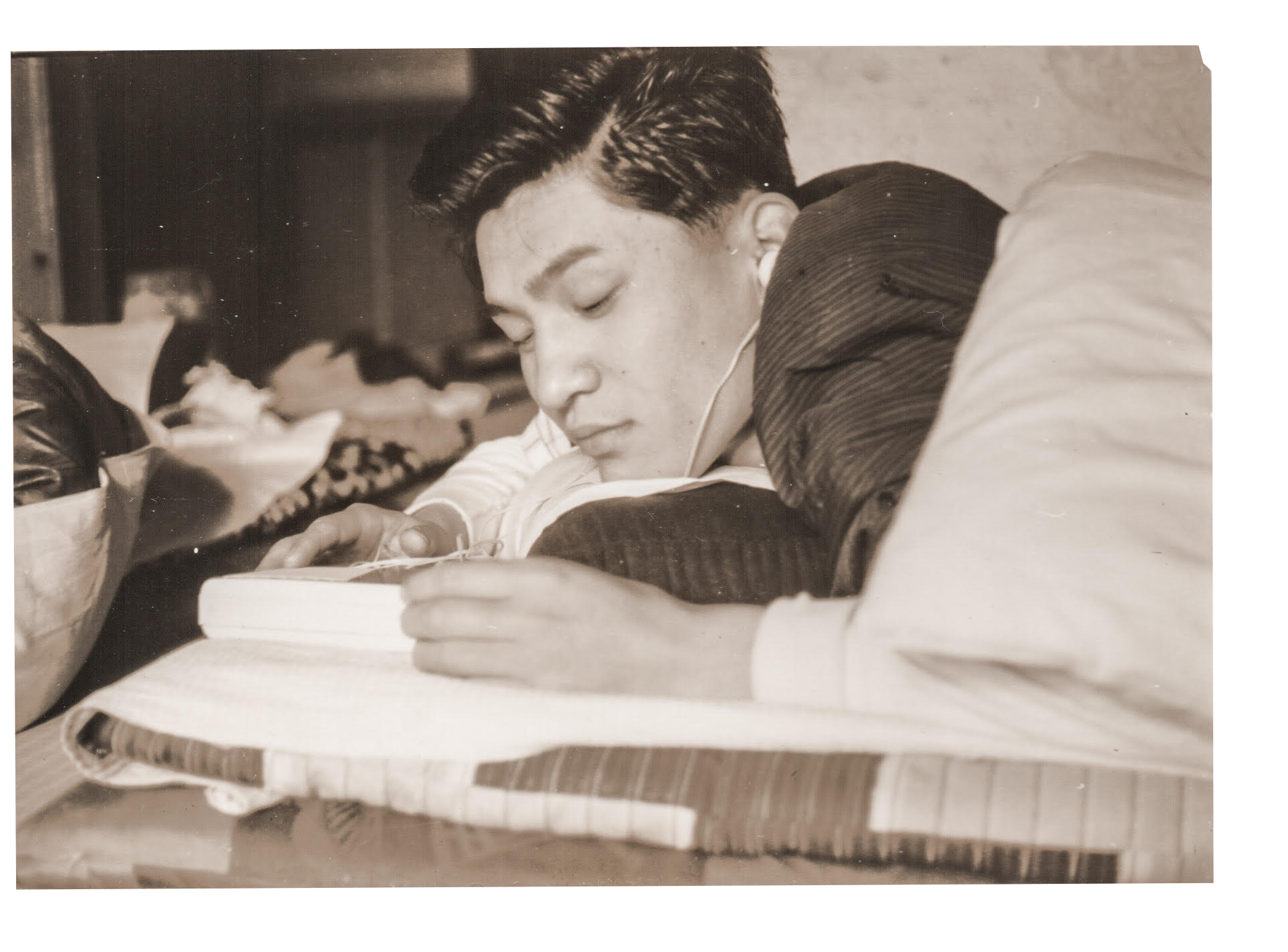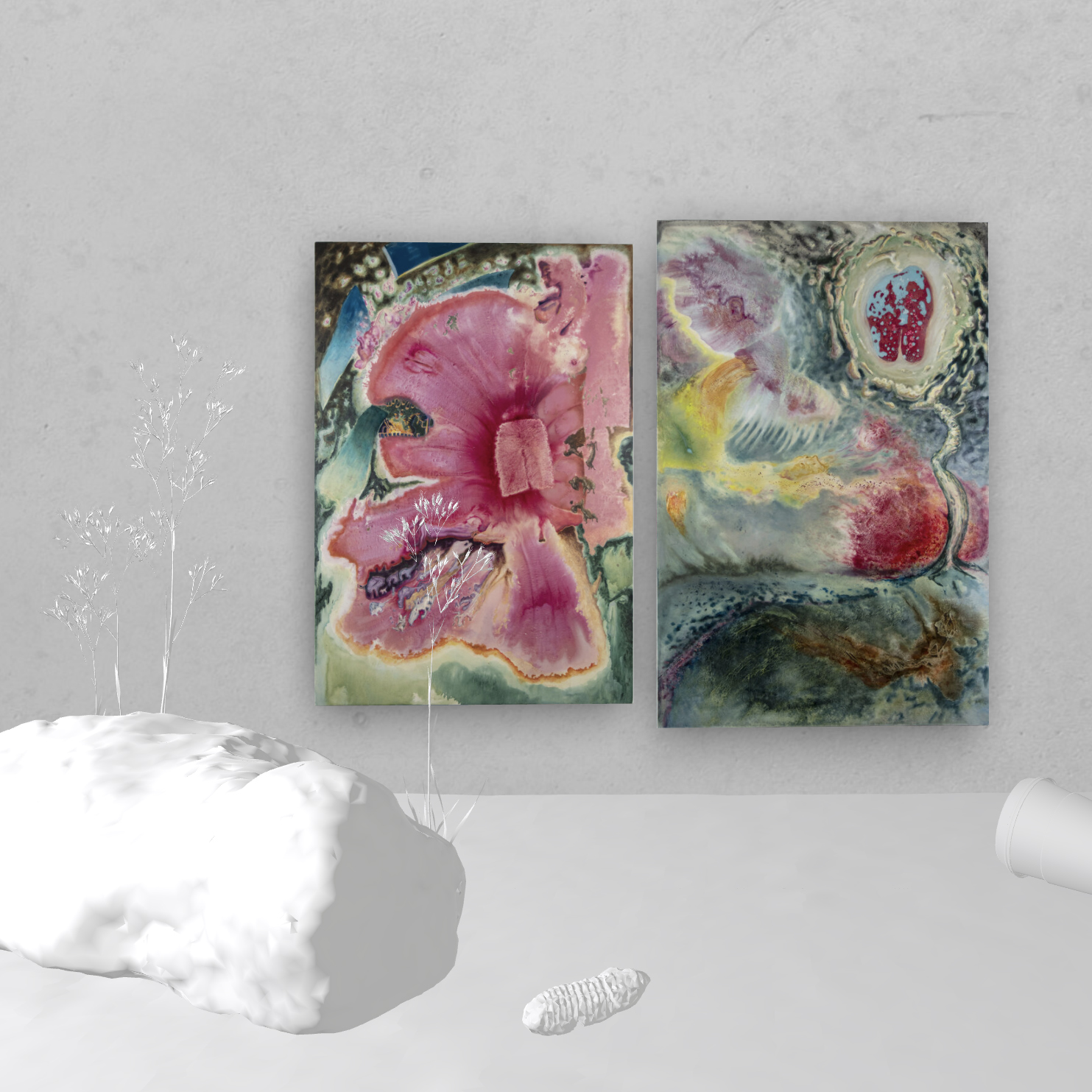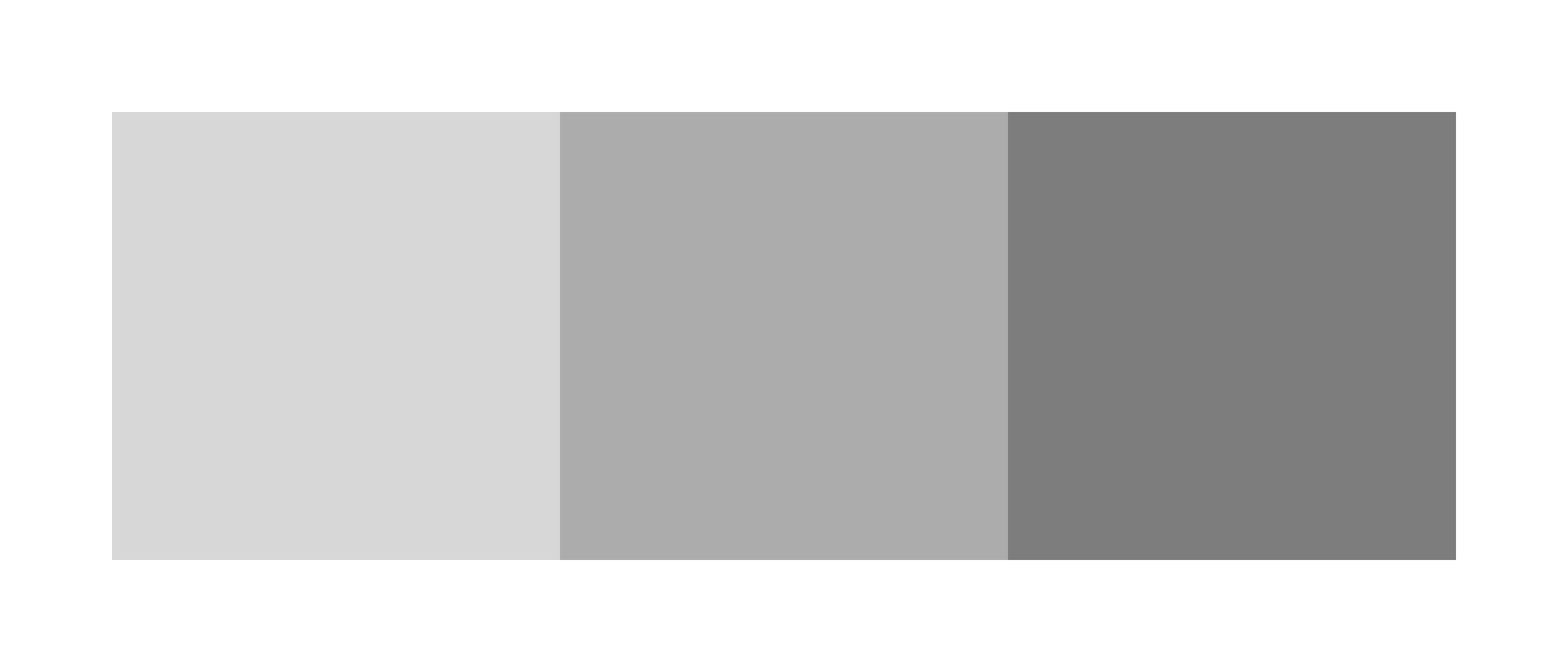RESIDUE
Residue explores the complex ways in which identity is formed and experienced in relation to personal histories—past, present and future. Each of the four artists demonstrates how our existence is shaped by a wide array of fragments that come together to inform our present-day consciousness.
Reflecting on his own experience being labeled as an outsider in Japan and Ireland, Shane Keisuke Berkery’s voyeuristic nostalgia of his paintings draws on photographic fragments of his grandfather’s life and the people around him, as a means of exploring Shane's experiences and his identity in relation to his grandfather's. Peihang Benoit references pictures of her mother traveling with the China Youth Corps and juxtaposes those images with moments of her present life encountering natural landscapes, flattening different points in time into one plane and showing how these moments congeal into her apparently unified identity. Billy Dietz’s paintings explore the tension between natural desire and the structural discipline of Catholicism, impacted by his religious upbringing in North Dakota; he creates and explores the character of Father Mark, a recently ordained Catholic Priest, who wrestles with the profound inner tension of penitence, shame, and undeniable lust. Ningxia Zhang’s sculpture touches on the futility of the perceived permanence of the digital and juxtaposes it against the natural world and its law of impermanence; her work invites us to reflect on how our identities are being processed differently with the advent of new technologies.
This exhibition encourages us to listen to each other’s stories, enriching our understanding of ourselves and the world(s) around us. Today is the history of tomorrow. Let us be mindful of the decisions that we make today so that the legacy and identities we create for future generations are shaped by compassion, respect, and peace.

SHANE KEISUKE BERKERY
STATEMENT
“In one stream of work I take inspiration from photos that my late granddad on my Japanese side took back in the 1950s and 60s. Because these photos are almost all candid shots, they create a sort of reverse portrait of my granddad, from his point of view, capturing his lived life through all those who surrounded him that made him who he was. I also take pictures, using old analogue cameras handed down to me from said grandfather as well as one from my dad. I too take photos of those who surround me, continuing on what my grandad did.
What I am trying to achieve through painting is twofold. One is to build a reverse portrait of myself through my eventual œuvre, like the one that I see of my granddad in his pictures. The second is the pursuit of conveying presence. By capturing with the camera and studying through paint, I think about the question of identity, my presence here and the presence of the painted figure in the painting.
At the very core of my practice is the compulsion to always improve and innovate my vision and painting skillset. I approach each painting as practice and research rather than a final product, and I actively resist falling into a formulaic mode of working. I think this shows in my work and creating the variety in vision is an important concept in and of itself.”




PEIHANG BENOÎT

ARTIST BIO
Peihang Benoît holds both BA and MFA degree in Fine Art at National Taiwan Normal University, and received another MA in Fine Art at Chelsea College of Arts. Her work has been exhibited in many countries such as UK, Taiwan, China, Japan, Korea, and Germany. She currently lives and works in Paris with her family.

"For her latest body of work titled “Youth Activities”, the artist’s mother’s personal archive served as a direct inspiration. The mother’s family migrated from China to Taiwan during the Chinese civil wars of the 20th century. The found black and white photographs Benoît’s mother as an active, politically engaged young woman. In her most recent series, Benoît merges her mother’s evidences and experiences as a migrant woman who lived in the isolation of patriarchy with her own personal reality navigating through similar power structures in a globalized anonymous world. By comparing these two specific historical and personal reference points, her paintings open up a space beyond binary thinking through disorientation: The paintings’ settings can’t be located, a sense of time vanishes, self-reflection sets in. Occasionally, fragments become visible, recognizable, understandable for Benoît, but also for us as the viewer, others remain blurred."


BILLY DIETZ

BIO
"Billy Dietz is a visual artist based in San Antonio, Texas. In his paintings and drawings, he depicts mental images from the mind of a fictional Catholic priest named Father Mark. He earned his BFA in Visual Arts from the University of North Dakota and his MFA in Studio Arts at the University of Tennessee. Dietz’ work has been exhibited at the North Dakota Museum of Art (Grand Forks, ND), Bemis Center for Contemporary (Omaha, Nebraska), Collar Works (Troy, New York) and 6 ft Ap’Art Gallery (New York, NY), amongst others."

The Kiss, 2022
Father Mark is a recently ordained Catholic Priest, who feels plagued with lustful thoughts for a parishioner. I paint his guilt-ridden psyche, where he abstracts these musings and tries to transcend earthly longings. Between the two motivations pertinent to the construction of Father Mark’s character—a musing on a forbidden sensual union and a fog of shame—sits imaginative play. The paintings explore a particular merging of figuration and abstraction ripe with drama. Thus, in this theatre-like production the viewer and I enter a space where private, vulnerable moments are both revealed and obscured.
Oil paint is amorphous; being able to allure and repulse. It can mimic blood, dirt, or even candy. Akin to the Catholic belief in transubstantiation, the conversion of bread into body and blood, I use oil paint in my work as if it were both flesh and stained-glass. To further connect the divine with natural elements, I make my abstract bodily forms glow by starting with luminous saturated colors then layering earth tones. The paintings employ large spills of blood-like paint and small figures embedded within that resemble illuminated manuscripts.
I have built a surreal world inspired by the Catholic imagination that indulges in the pleasures of paint. The imagery recalls Catholic stained-glass windows, Boschian creatures, amorphous surreal forms, and parceled bodies turning back into paint. I create as if the paintings and I were in an intimate, physical conversation with one another. Desire drives the work, but in the end the story is told by the paint.

NINGXIA ZHANG
Ningxia Zhang is a Chinese-born artist and designer living and working in New York City. In her practice, she reconstructs her personal histories via performances and installations, where she weaves movements, objects and sounds from different time and space into new narratives. With a focus on digital media, such as web and virtual reality, her work encourages the engagement and participation of a wider audience. Ningxia was a resident at School Of Visual Arts Summer Residency Program: Contemporary Practices in New York (2021). She received a M.Sc in Computer Science from Stanford University (2014), a B. Eng. in Software Engineering from Fudan University in Shanghai (2012), and a B.Sc. in Computer Science from University College Dublin, Ireland (2012).

System Disintegration, aerial view


STATEMENT
“In engineering, the process of bringing together components to make a larger functioning system is called system integration. In the natural world, however, organisms die and disintegrate into simpler organic or inorganic matter. In today’s fast-paced life permeated by technology, we seem to be lost in the immediacy technology engenders and the urgency of attention it demands. When we create devices, software and digital content, we are caught in the illusion that they assume a permanent existence. If we switch the perspective to a macro timeline, we’re instead faced with our organic nature, our mortality, the inevitable disintegration of our bodies and re-integration with nature, while the industrial objects will take much longer to go through the same process. In this work, these realities are pieced together to invite the viewer to reflect on the legacies we leave behind, digital or physical, the meaning and significance of the ceaseless production and consumption, and our relationship with nature. Personally, these are the questions I pondered on when working in Silicon Valley producing software and services that claimed to ‘change the world’ and ‘make a dent in the universe’.”

